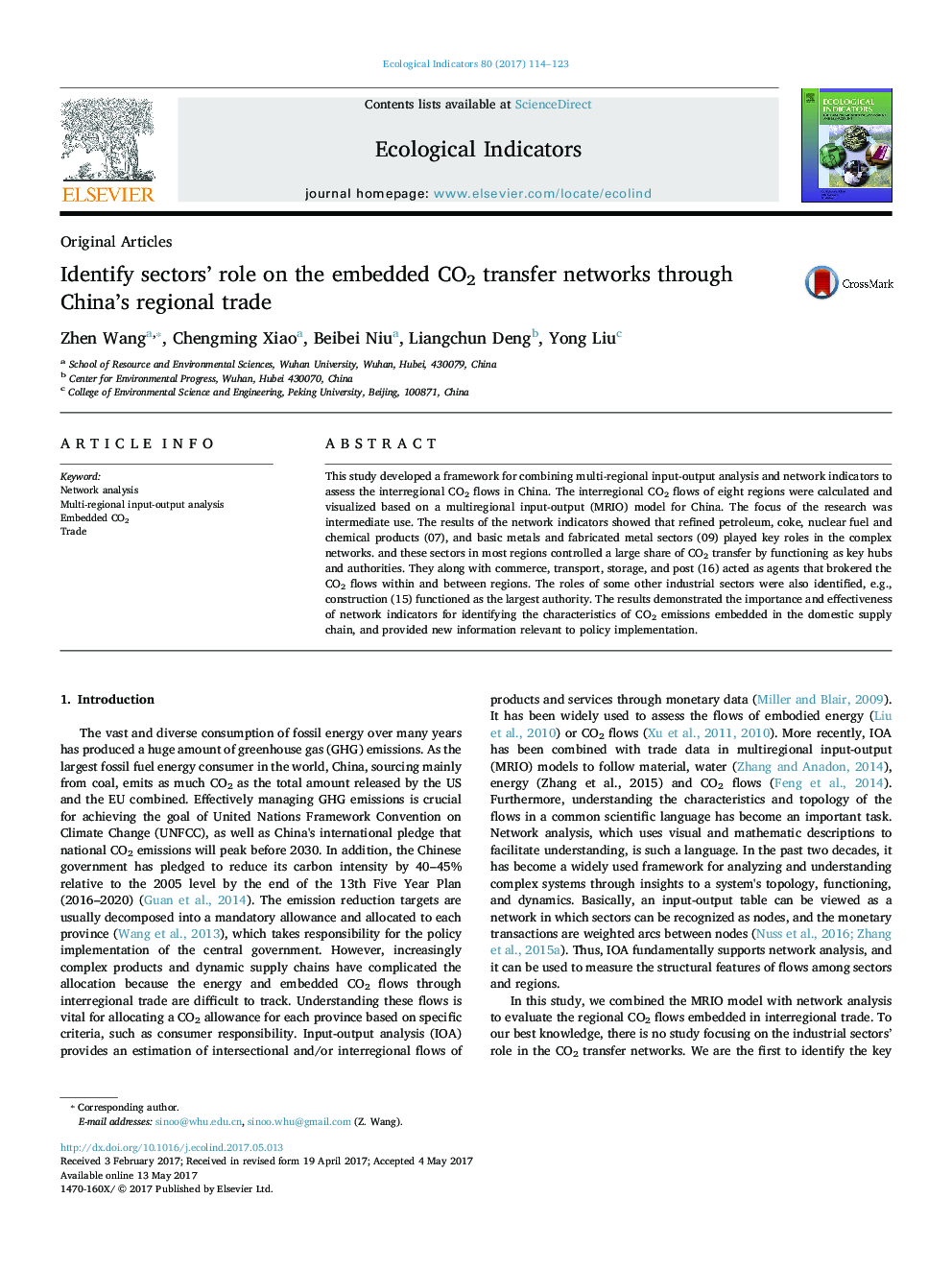| Article ID | Journal | Published Year | Pages | File Type |
|---|---|---|---|---|
| 5741373 | Ecological Indicators | 2017 | 10 Pages |
â¢MRIOA and network analysis was used to analyze China's domestic CO2 transfer.â¢Control/dependence, and hubs/authorities were used to identify sectors' roles.â¢Brokerage roles of key sectors were identified.â¢Policies for CO2 emission control should accord to sectors' roles.
This study developed a framework for combining multi-regional input-output analysis and network indicators to assess the interregional CO2 flows in China. The interregional CO2 flows of eight regions were calculated and visualized based on a multiregional input-output (MRIO) model for China. The focus of the research was intermediate use. The results of the network indicators showed that refined petroleum, coke, nuclear fuel and chemical products (07), and basic metals and fabricated metal sectors (09) played key roles in the complex networks. and these sectors in most regions controlled a large share of CO2 transfer by functioning as key hubs and authorities. They along with commerce, transport, storage, and post (16) acted as agents that brokered the CO2 flows within and between regions. The roles of some other industrial sectors were also identified, e.g., construction (15) functioned as the largest authority. The results demonstrated the importance and effectiveness of network indicators for identifying the characteristics of CO2 emissions embedded in the domestic supply chain, and provided new information relevant to policy implementation.
